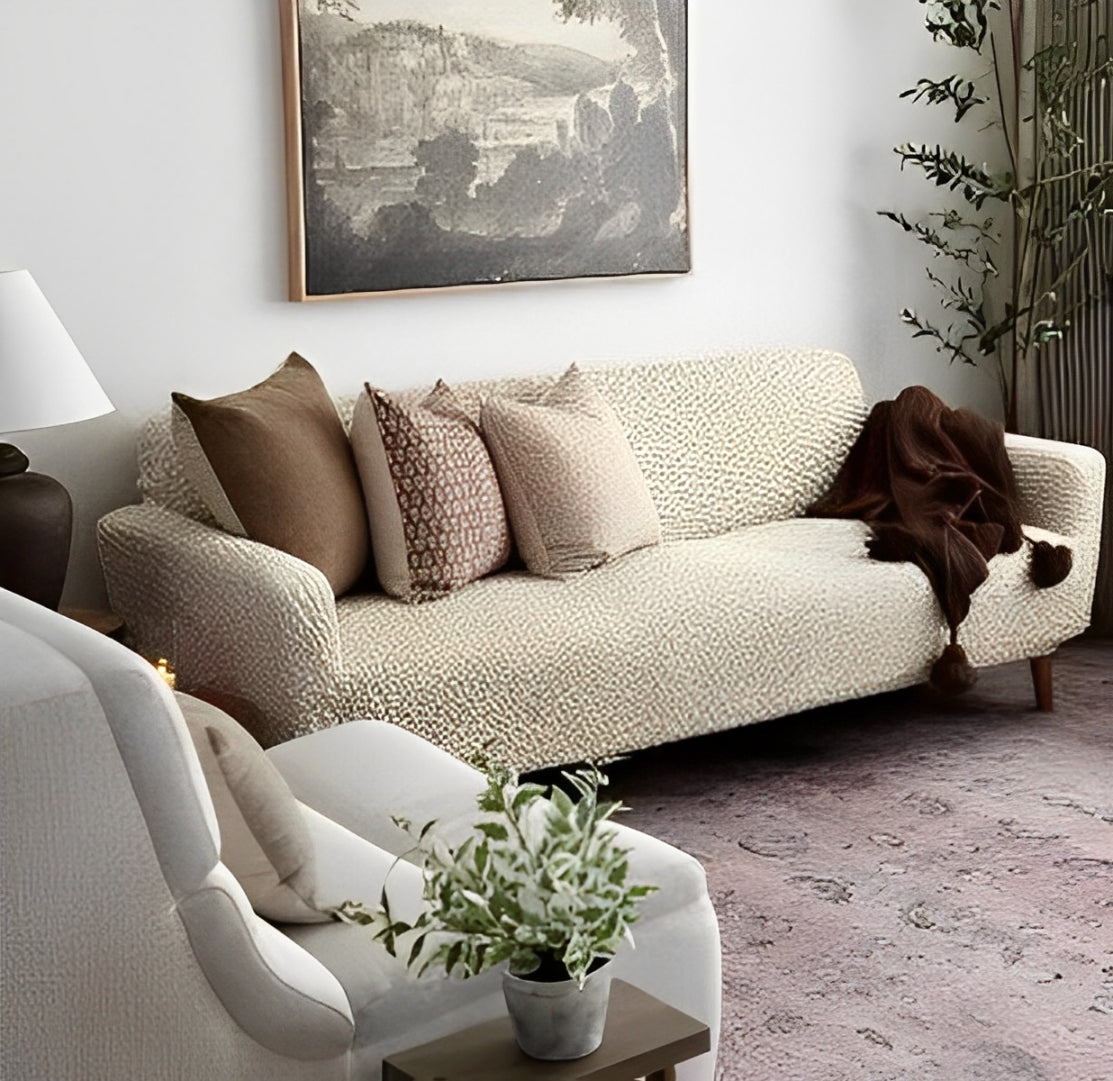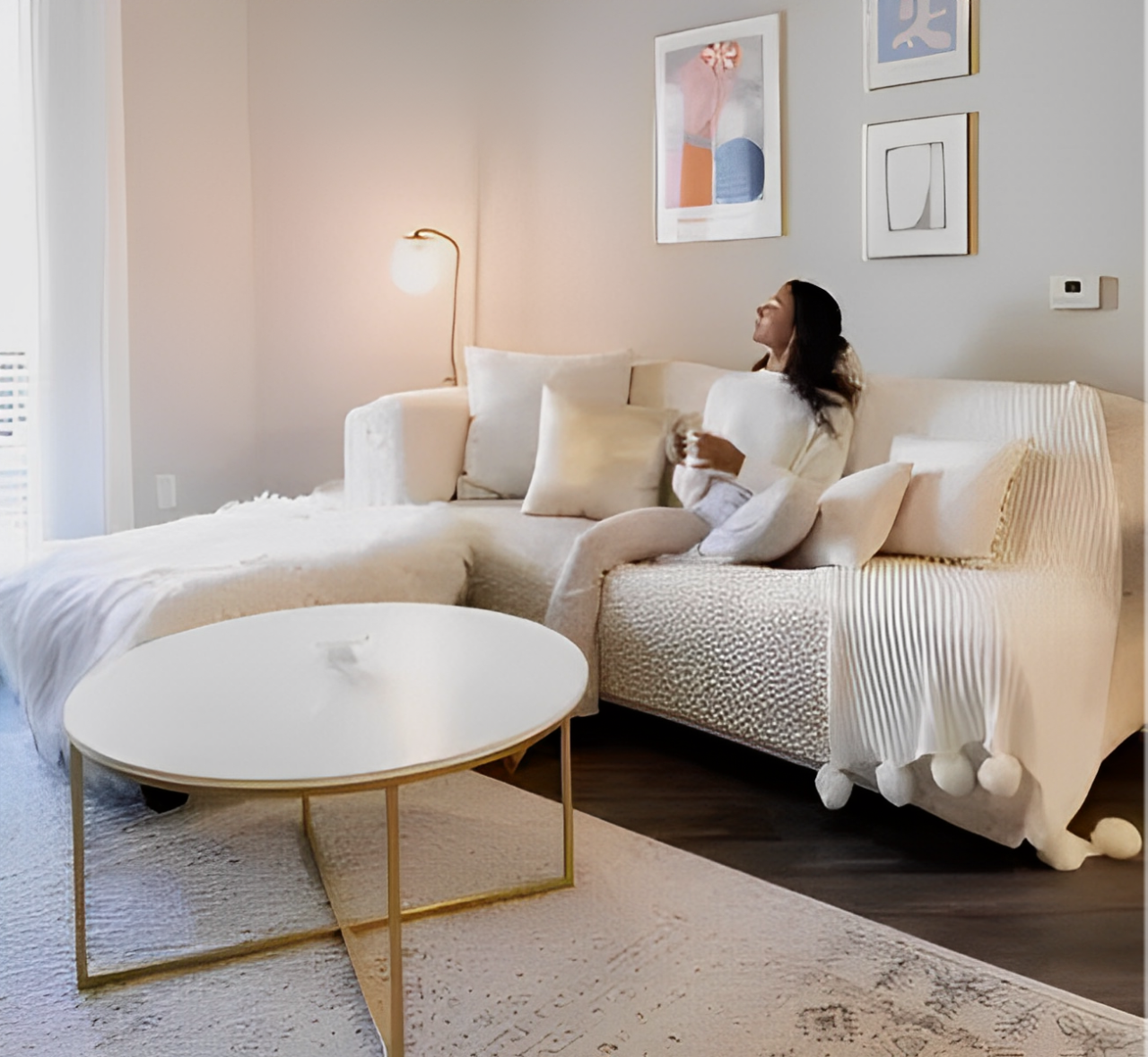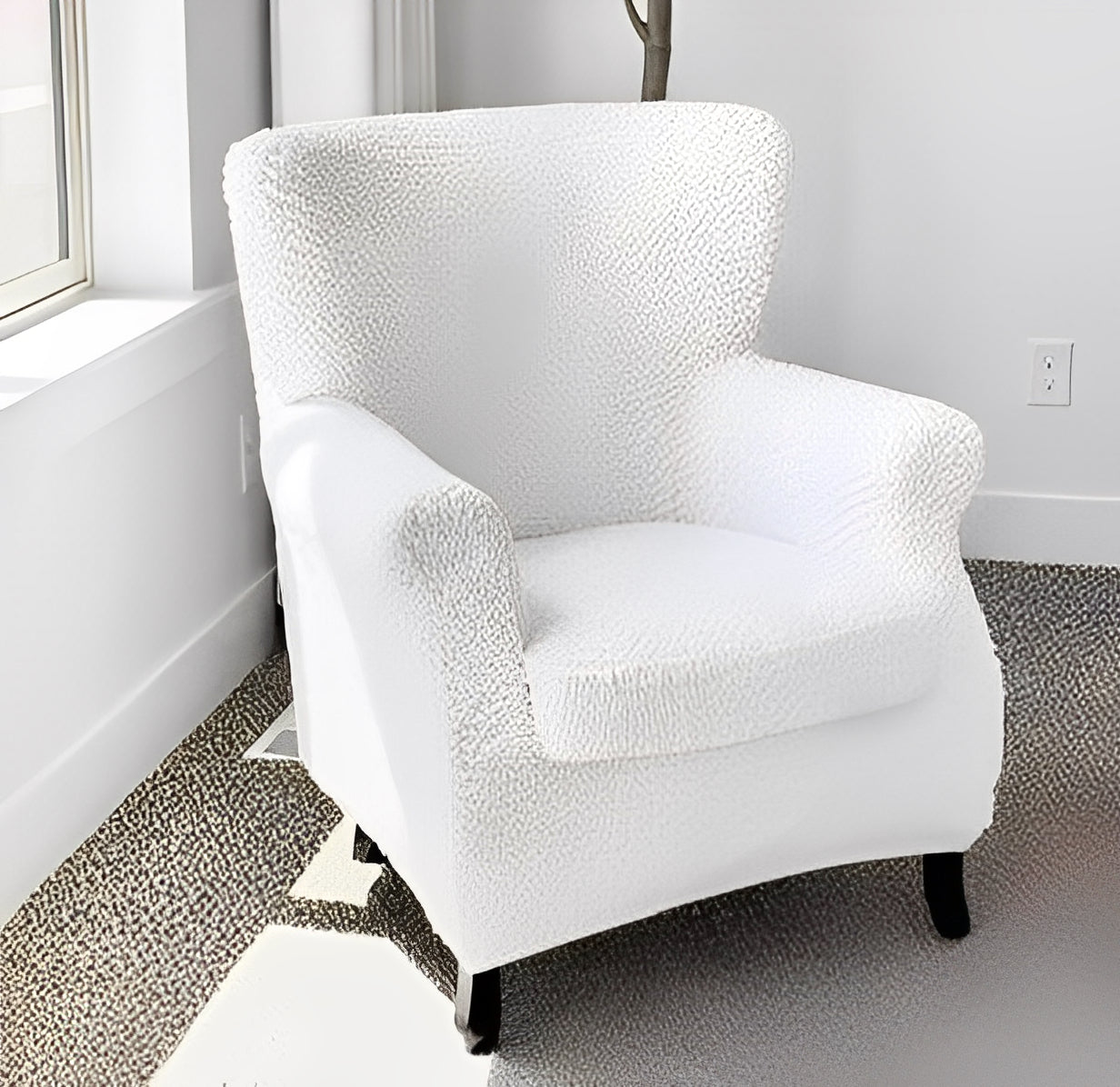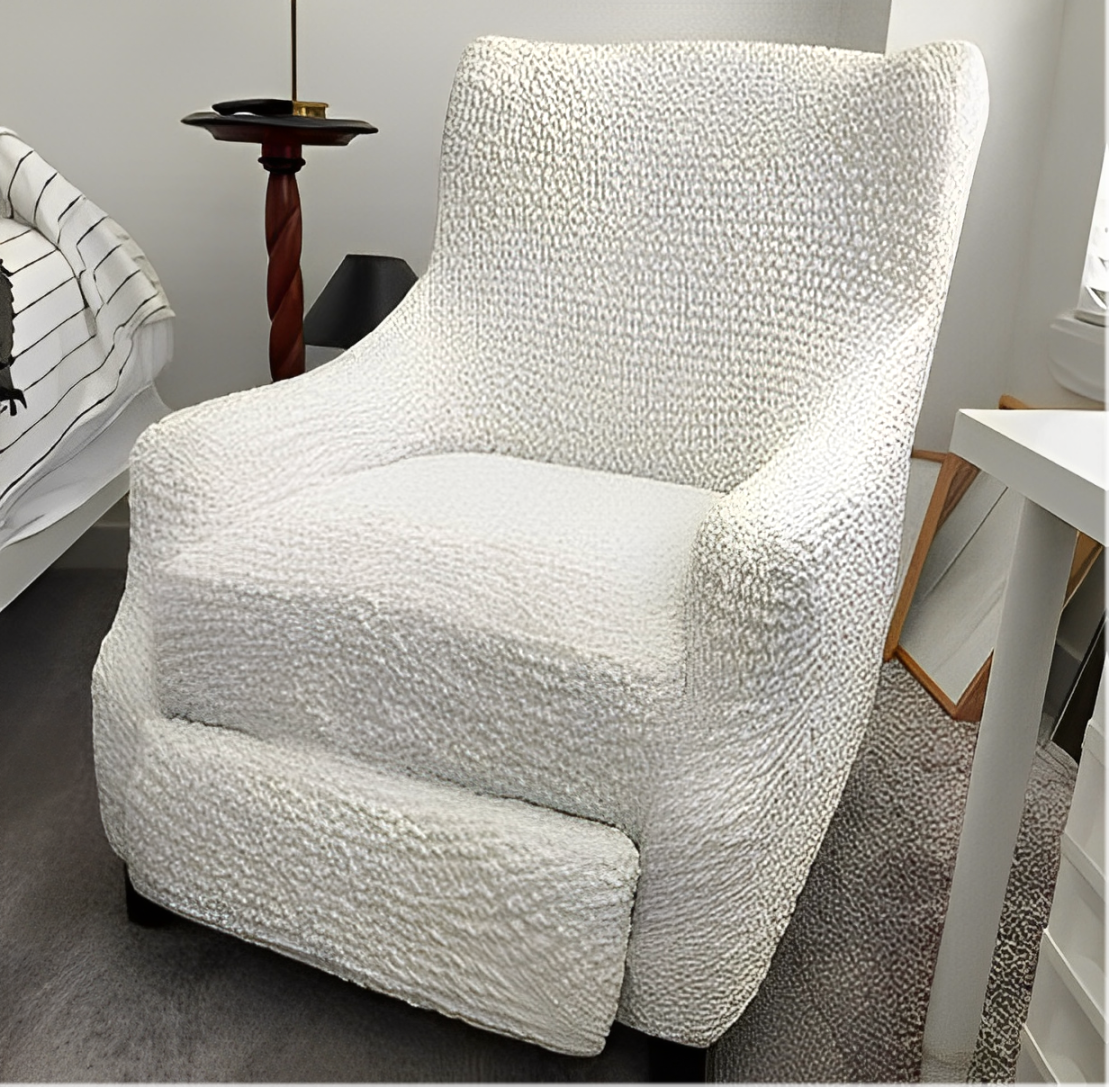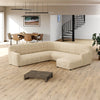Becoming a focal point of today's living room, the sofa plays a central role in relaxation, conversation, and leisure. We have customized it into countless styles and configurations to suit our needs perfectly. Yet, the rich history of this seemingly ordinary furniture is often overlooked.
Today, we embark on a journey through different periods, discovering the fascinating development of the sofa. From its ancient roots to the innovative design features, we will uncover the story behind this essential element of our domestic comfort — and even see how modern additions like slipcovers and sectional couch covers help us preserve and personalize these pieces today.
What’s in a Name? The Origin of the Term “Sofa”
Before we go deep into the story of this ubiquitous comfort haven, let's take a moment to find out the etymology of the word “sofa” itself. It is a long, upholstered piece of furniture with a back and armrest, designed for relaxation and lounging.
The term originates from the Arabic word “suffa”, which refers not to an individual piece of furniture but a raised section of the floor intended for comfortable seating. This “suffa” would be lavishly decorated with drapes, rugs, and pillows, creating a luxurious and inviting space for socializing and chilling.
Interestingly, this is not the only way the term "sofa" has evolved. "Couch" takes another language path, adapting from the French verb "coucher," meaning "to lay down." This connection directly shows its primary function: offering a convenient place for rest. Meanwhile, the English "settee" comes after the verb “settle”, alluding to the process of seeking relief and affirmation in a specific spot.
Finally, the Persian term “devan” offers another interesting perspective. Linking to a group of rulers who typically lounged on soft furnishings, “devan” eventually evolved into the English “divan”, reinforcing the item’s association with rest and a note of status.
So, the next time you sink into your plush sofa, take a moment to appreciate its physical form as well as the rich linguistic journey that led to its familiar naming.
Ancient Sofas: Traditions of Comfort

The idea of a sofa has its roots in early civilizations. In Mesopotamia, archaeologists have unearthed evidence of elevated platforms and couches dating back to 3500 B.C. These early iterations were probably the simplest, made of wood and leather, but still accomplished the same function: providing a way to rest and connect.
Ancient Egyptians also embraced comfort. Their elaborately carved wooden couches, often embellished with jewelry such as gold and ivory, represented richness and social status. These pieces were reserved for royalty and the elite, signifying their importance within society.
Greeks and Romans, too, incorporated couches into their daily lives. The Greek klismos, a raised couch with curved legs, provided a spot for gathering during meals and philosophical discussions. Romans, famous for their passion for pleasure, favored the lectus, a multi-purpose piece used for dining, lounging, and even sleeping.
Throughout the Middle Ages and Renaissance

The Roman Empire's fall ushered in a thousand-year period where the once-luxurious sofa took a backseat. Gone were the days of intricately carved Egyptian couches and plush Roman lectus seats. Medieval life revolved around practicality, with homes lacking designated living spaces and centered around a single hearth.
People gathered on no-frills benches and tables, a stark contrast to the reclining comfort enjoyed in previous eras. This shift wasn't just about aesthetics; the Church's influence played a significant role. Believing physical comfort could lead to sin, religious authorities promoted austerity, reflected in the stark wooden pews still used in many churches today. This focus on discomfort extended to homes, hindering the evolution of the sofa.
Thankfully, the Renaissance brought a revival of classical ideals, including a renewed appreciation for comfort. With the rise of upholstery in home design, furniture makers embraced cushioned seating, stuffing early sofas with readily available materials like horsehair and hay.
Italian designers added backs and arms for increased comfort, though some prioritized aesthetics over relaxation, resulting in breathtakingly detailed pieces that weren't always practical. Regardless, the foundation for the comfortable and stylish sofas we enjoy today was set.
The Rise of Modern Sofas: 18th and 19th Centuries

The 18th century ushered in the Scientific Revolution, which had a profound impact on furniture production. Advancements in woodworking and upholstery allowed for the creation of more comfortable and visually appealing sofas. Additionally, the rise of the middle class created demand for well-made and affordable furniture.
This period also saw the introduction of the first slipcovers. Wealthy women commissioned intricate covers to protect their precious furniture. Eventually, slipcovers became a fashion statement, with elaborate designs turning into a form of quiet competition among the social elite.
The 19th century witnessed an upholstery revolution, driven by the Industrial Revolution in Britain. Spiral springs — ancestors of today’s innerspring mattresses — appeared, offering better support than traditional fillings. Combined with rapidly improving manufacturing technologies, furniture became more affordable than ever.
The design world wasn’t static either. Neoclassical elegance reigned, but Federal, Empire, and neo-Gothic revival styles also captured imaginations and living rooms across the globe.
The iconic Chesterfield sofa emerged in this era, marked by deep button tufting and rolled arms. Initially crafted from luxurious leather, it remains a timeless and highly sought-after piece.
Sofas of the 20th Century: Innovations and Iconic Designs
![]()
In the 20th century, sofa design underwent dramatic transformation. As modernism grew, designers emphasized sleek lines, functionality, and the use of new materials. Pioneers like Le Corbusier and Mies van der Rohe introduced steel and chrome, creating minimalist sofas that embodied the industrial aesthetic.
Mid-century design further expanded possibilities. The famous Eames lounge chair and ottoman, made from molded plywood and smooth leather upholstery, showcased the era’s dedication to ergonomics and creative material use.
By the mid-20th century, informal living took center stage. Sectional sofas gained immense popularity, offering modular layouts adaptable to any room configuration. Comfort became king, with plush cushions, recliners, and versatile structures appearing in homes everywhere.
Modern Sofas: Where Comfort Meets Style

The modern sofa is a shape-shifting chameleon, adapting to our ever-changing needs and design preferences. Gone are the days when a single style dominated the living room.
Endless Configurations
Today, options are limitless — sleek sectionals for movie nights with friends, cozy loveseats for intimate conversations, and clever sleeper sofas that transform into guest beds.
Tech-Enabled Relaxation
Advanced cushion materials cradle the body in comfort, while built-in USB charging ports, motorized recliners, and hidden storage create a perfect blend of practicality and luxury.
Aesthetics with a Modern Edge
Modern sofas come in a wide spectrum of colors, from bold jewel tones to calming neutrals, allowing anyone to create a personal visual statement at home.
Material Diversity
Material choices today are incredibly diverse — from top-grain leather for timeless sophistication to performance fabrics like stain-resistant polyester blends ideal for families with children or pets. Plush velvet and textured linen offer a soft, cozy touch for those craving tactile richness.
The Slipcover Revolution
And thank goodness, there are removable Mamma Mia slipcovers! No longer do we have to live in fear of spilled drinks or muddy paw prints. Modern loveseat covers, a far cry from their historical counterparts used for contests amongst socialites, come in a vast array of colors and patterns. They offer the perfect solution for keeping our beloved sofas looking pristine – a lifesaver for messy households or those who crave a seasonal refresh for their living areas.
The Bottom Line
The sofa's changes unveil a captivating narrative intertwined with social impact, technology innovations, and the constantly growing conception of comfort. From its primitive rise as an elevated platform used by ancient cultures to the cushy seatings that fill modern living rooms, the sofa has consistently reflected humanity's desire for relaxation, socializing, and aesthetic expression.
- A Reflection of Society: The opulent, intricately carved couches of ancient Egypt reflected the wealth and influence of their owners, whereas the humble benches of the Middle Ages reflected an era defined by practicality and simplicity. Fast forward to the present epoch, our love of sprawling sectionals and reclining mechanisms highlights our desire for ultimate comfort and entertainment in our homes.
- Technology's Impact: Technology has been a driving force in the evolution of sofas as well. The Industrial Revolution introduced faster production methods and the innovation of coil springs, democratizing comfortable seating and making it more accessible to broader segments of society.
We hope this exploration of the sofa's rich history has been as engaging for you as it has been for us. As experts in the field, we are happy to share fascinating details about the world's most beloved and continuously evolving piece of furniture.
MORE INTERIOR DESIGN IDEAS AND INSIGHTS:
